Found Objects #12: The Process of Re-Drawing and Re-Writing
A glimpse into the third part of my graphic memoir.
Hello everyone, and Happy New Year! I meant to post this yesterday, but I had too much fun on New Year’s Eve, and I was a bit sluggish all day. Oh well!
Today, I want to share some progress I’ve made on my graphic memoir, Finding Hope. I thought it would be fitting to lead with this illustrated diary entry from Part II, when Hope was celebrating the new year in Alaska.
For those who are new here, I have been working on a graphic memoir for several years, where I explore my connection and fascination with a distant ancestor (named Hope) through our coming-of-age stories and experiences living overseas. The story transitions back and forth from my story to Hope’s story, and it traverses a range of settings and time periods. (I’ve written about my process in previous posts, but here’s an overview on my website.)
In 2022, I decided to serialize the book into six 36-page comic books to encourage myself to keep working on it. I finished Part I in March 2022, Part II in March 2023, and aside from the hand lettering, I have now finished Part III — which means that half of the book is complete! (I’m going to design a new cover, and print some copies next month.)
I have to say, my process for this book has been wildly inefficient. When I first started working on this story for my MFA thesis in 2019, I didn’t understand how time-consuming it would be, and I rushed through so many pages in a short period of time. Upon graduating in August 2020, I felt burnt-out and dissatisfied with my work. My writing was superficial and weak, and I wasn’t proud of the illustrations. And as you all know, other things were happening that year. I decided to put the book on the back burner, and I redirected my focus to teaching, freelance work, and making shorter comics. In the next few years, I would move four times and have several different jobs.
Only now do I realize how valuable it was to take a break from this project, and instead, spend more time reading comics and experimenting with new forms, while searching for fulfillment in my career. Developing non-fiction comics courses for The School of Visual Arts’ Continuing Education and teaching illustration at Maine College of Art & Design has felt like a second MFA degree. These courses have pushed me to explore the relationship between text and image in smarter ways and incorporate more visual metaphors into my work. Each class invigorates my love of the medium, and I’m so lucky to teach alongside such talented colleagues who inspire me to be a better illustrator, not to mention all the amazing adults who take my comics classes!
As I’ve eased back into the project, it’s helpful to view my earlier work as a rough draft. It’s easier to re-write, re-draw, and re-format existing material than starting from scratch, and for that, I’m grateful for all the hours I put into it. Time away from my book has allowed me to enhance the narrative and test my endurance. It’s also made me realize how compelled I am to tell this story. And on that note, let me share a few pages from Part III:
This is the first page in Part III, introducing life in the Santo Tomas Internment Camp in 1942. It took me awhile to design this page, and I don’t think I would have drawn such a complicated crowd scene back in 2020. I still struggle to know when a page is “finished.” I can spend hours fiddling with a tiny detail on an article of clothing that no one will care about, but me. I can get carried away with color palettes and patterns, but I try to simplify my characters and settings, while retaining details from my research that evoke specific places and time periods.
This double-page spread is part of Hope’s story, where she’s teaching fifth graders a song for their Thanksgiving program in 1942. I drew the original (bottom) spread in 2020. The top image is the final version that I re-worked last October. I re-drew the figures to match the style of the rest of the book, and I changed all the facial expressions that were poorly drawn. I also changed the race and ethnicity of a couple of kids to better reflect the population in the Santo Tomas Internment Camp. There were over 4000 internees, but most were white Americans. Only 70 were African American and 100 were Filipino or part Filipino (typically a spouse who was married to an American and their children.) There were 400 children in the camp.
On this page, I wanted to show how much the Filipinos helped the internees at the beginning of the war, when the Japanese guards permitted contact. Again, I don’t think I would have drawn the first panel from this perspective back in 2020, but it adds so much more visual interest. It was challenging, and it remains one of my favorite panels so far in the book.
It may seem like a stretch that the story later transitions from an internment camp in 1940s Manila to South Korea in 2009, but I promise, it all connects!
I experienced so much nostalgia while drawing these flip phones and the best Korean fast food, Kimbap Cheonguk! (Of course, the lettering is still in progress. The placeholder text is a hand drawn font that I created earlier this year as a demo for my Digital Imaging class.)
And below, I’m sharing one of my favorite scenes from this section.
My goal for 2024 is to finish making the book and, and most importantly, to continue enjoying the process.
If you have read this far, thank you for your support! For my zine subscribers, you give me a reason to experiment with new formats for visual narratives. I have a running list of ideas for comics and zines, and thanks to you, I can give myself these “assignments.”
I sent out the November/ December issue of these recipe zines to all my paid subscribers today, and I hope that you enjoy them as much as I enjoyed making them. If you decide to cook any of these recipes, please let me know!
Wishing you all a happy and healthy 2024. Thank you for being here!


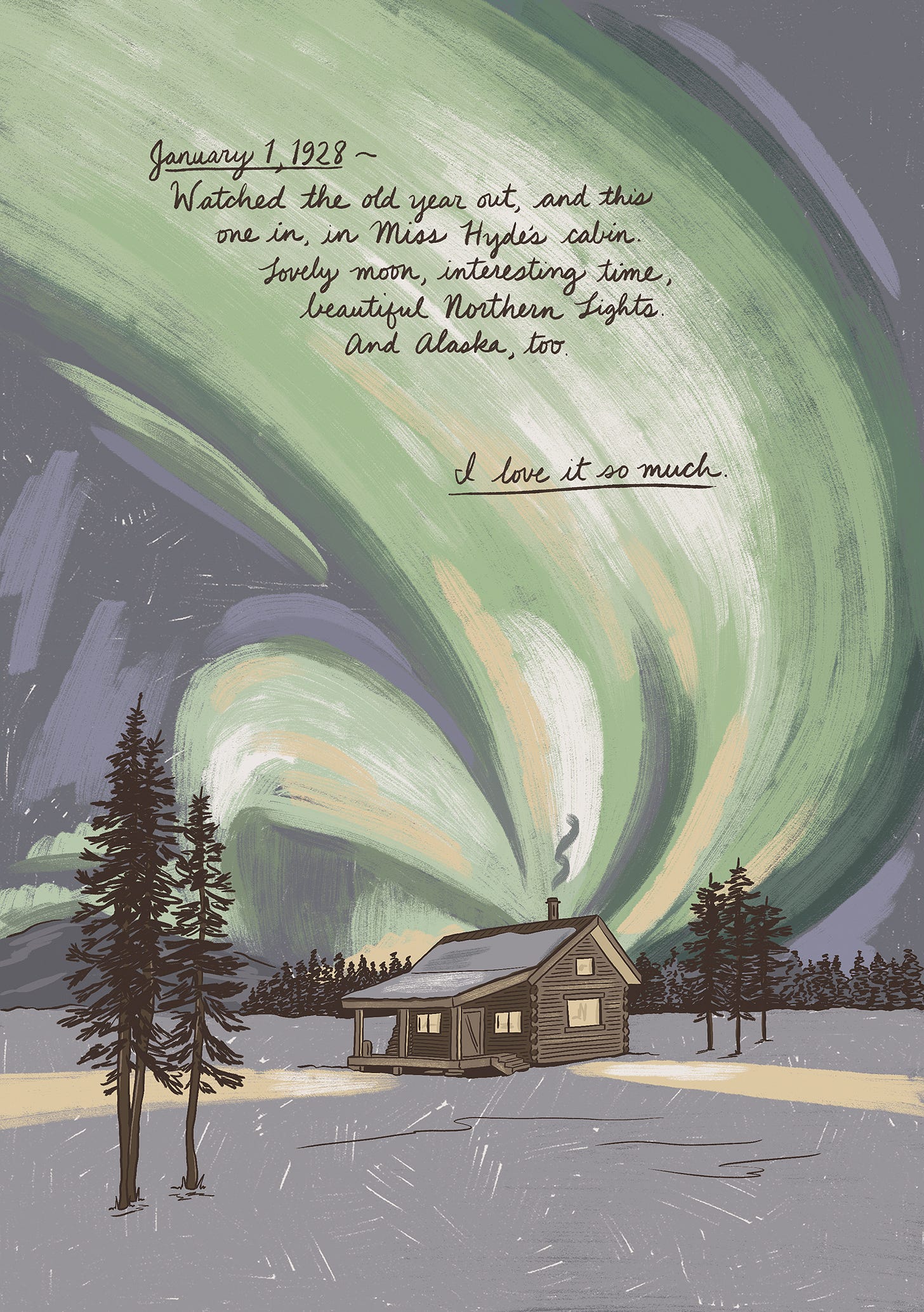
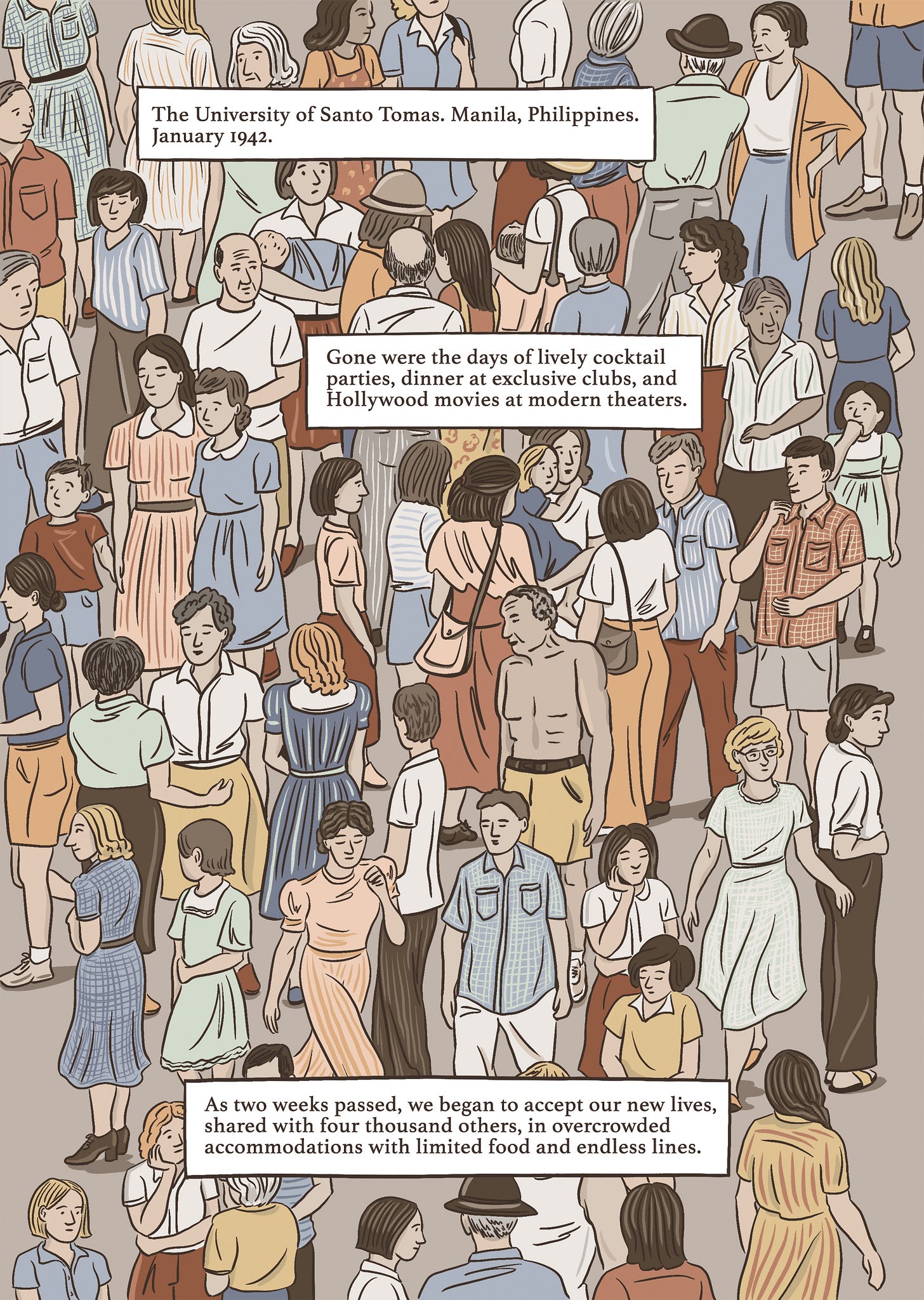

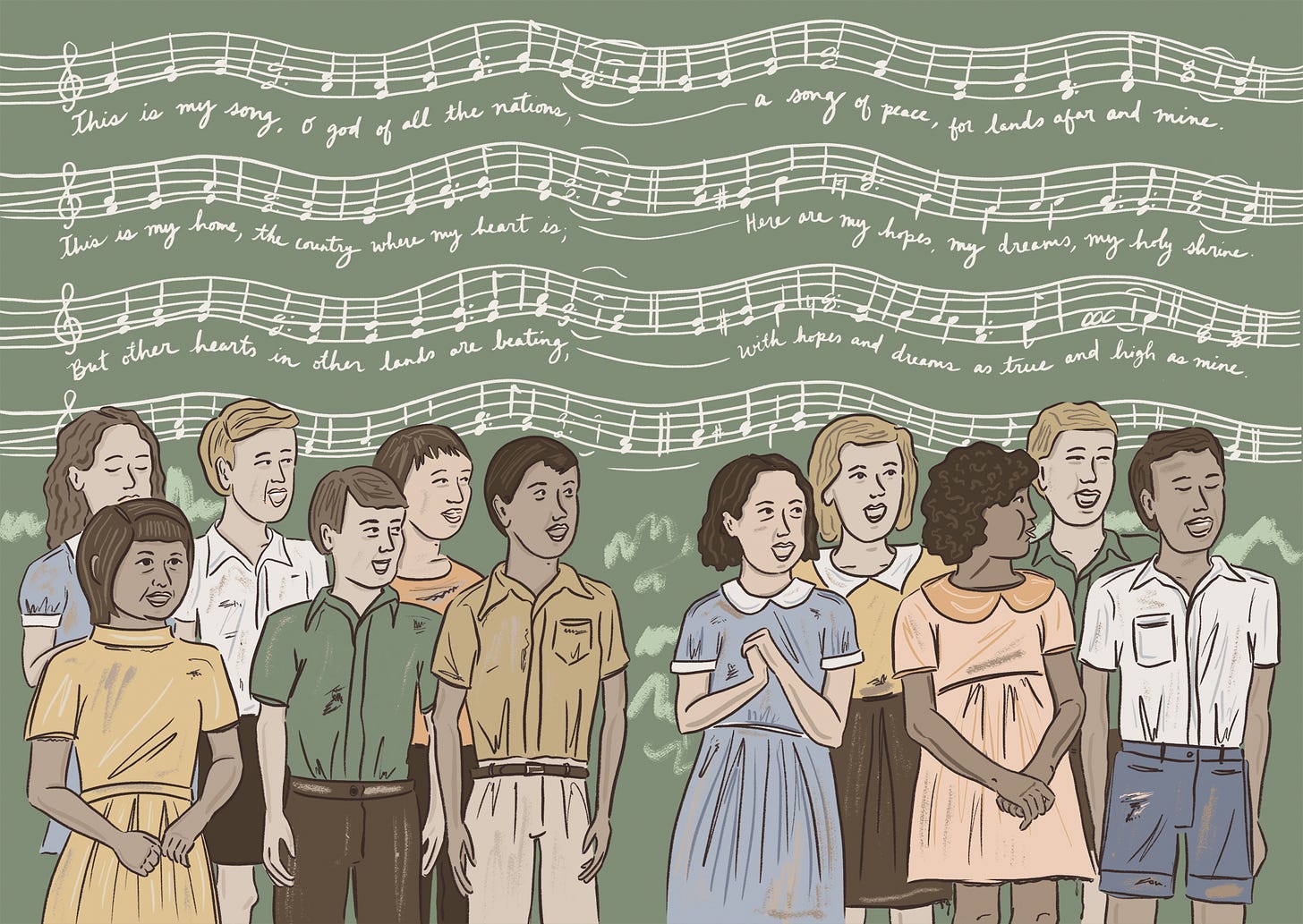

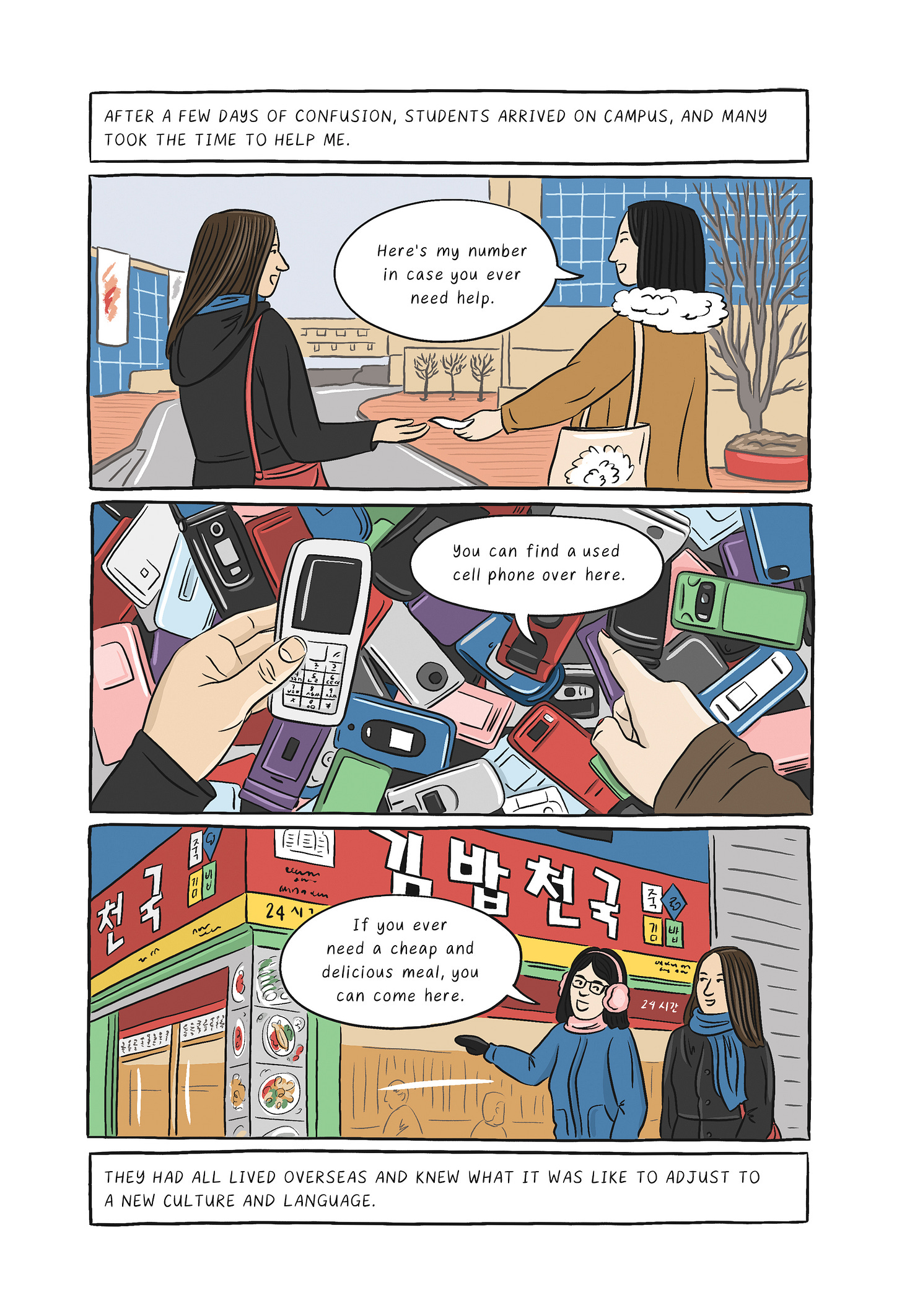

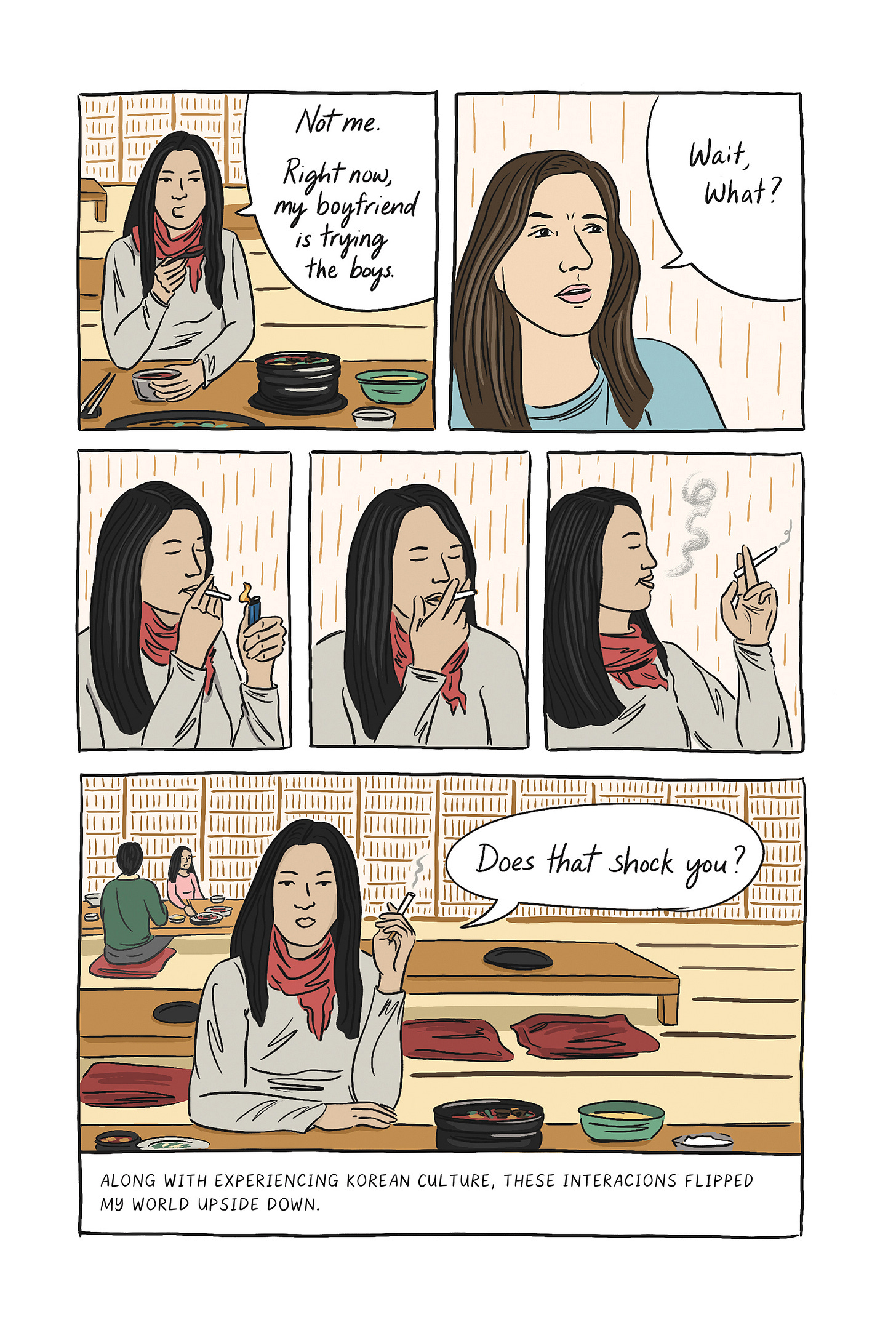


It’s neat to hear your process and observations of the last few years of work; especially having seen the first two installments and been in one of your courses. Thanks for sharing!
I love all these insights into the graphic memoir process! I also loved the first two issues and am excited for book 3!